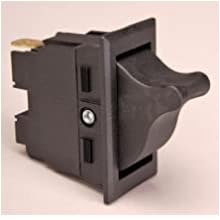





⚡ Stay powered, stay connected — never miss a beat during outages!
The Reliance Controls 31410CRK Pro/Tran Transfer Switch Kit is a robust 30 Amp, 10-circuit solution engineered for seamless integration with portable generators up to 7,500 watts. Featuring an 18-inch flexible conduit whip and a durable powder-coated steel cabinet, it ensures quick installation and reliable, safe power transfer for both homes and businesses.







| Product Dimensions | 17.78 x 11.43 x 34.93 cm; 8.62 kg |
| Part number | 31410CRK |
| Item display height | 13.75 inches |
| Item display length | 4.5 inches |
| Item display width | 7 inches |
| Item display weight | 8.21 kg |
| Material type | Copper |
| Power source type | Corded Electric |
| Manufacturer | Reliance Controls |
| Item model number | 31410CRK |
| ASIN | B000HS2L3O |
Trustpilot
3 days ago
3 weeks ago